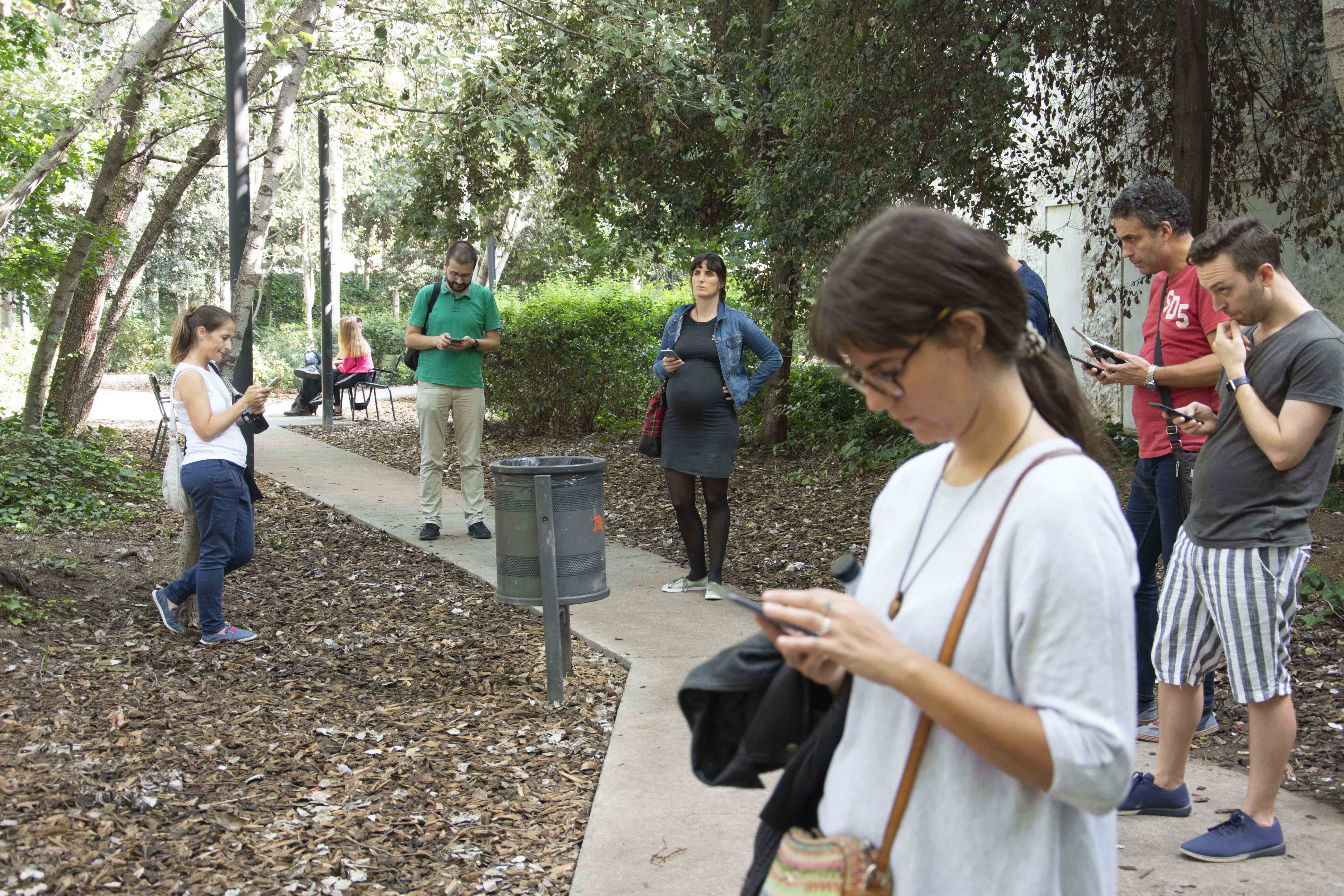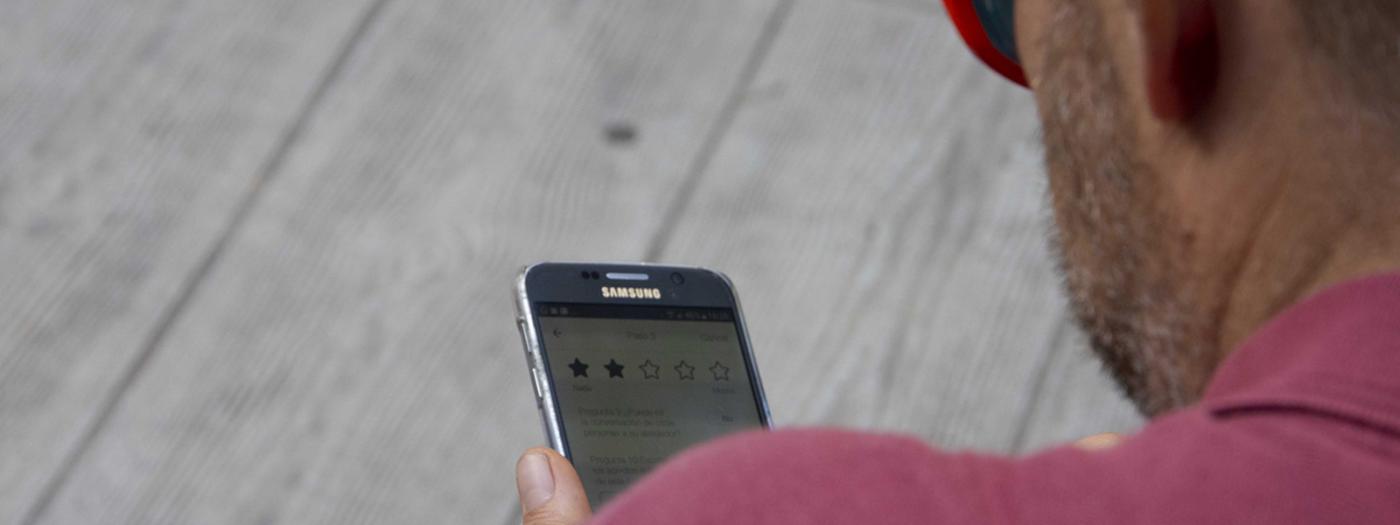As part of the Hush City Mobile Lab Project, and coinciding with Sound Walk Sunday 2019, the Hush City Soundwalk Barcelona was held. Using the Hush City app, participating citizens were able to take acoustic measurements of the pedestrianised mega-block in Poblenou with just their telephone, as part of a guided route meant to help the public discover the sound levels at various points of the neighbourhood. The public identified quiet spots that are acoustically more pleasant and beneficial to their health, helping them enjoy peace and calm.
Hush City is a mobile app developed by Antonella Radicchi, architect and researcher based at the Technical University of Berlin, to make sound maps and evaluate quiet areas in cities.
Hush City Soundwalks are free, open guided tours, whose goal is to identify quiet spots in cities using the app. The data collected is incorporated in real time into Hush City Map, an open-access online map.
The event is part of the Global Hush City Soundwalks programme, held this September, which kicks off with Sound Walk Sunday 2019 (on day 1) in cities around the world, including Bristol, Chicago, Vancouver, Paranapiacaba, Berlin, Milan and Melbourne. In Spain, Granada will be taking part as well as Barcelona.

Participants in the Hush City Soundwalk Barcelona were guided by Antonella Radicchi and Rosa Maria Alsina Pagès, a professor and researcher at La Salle Campus Barcelona-URL specialising in, among other things, the study of the diversity and nature of acoustic signals in cities.
The app was used to measure the sound levels at various points users have examined and has collected their feelings about each place. This has resulted in the creation of a series of valuable data on the impact of different sound environments on the people living there. Sound environments don't just depend on decibel levels alone: “The perception of sound is not only auditory, but also depends on visual aspects, urbanism, vegetation...”, explains Radicchi.
The negative effects of noise pollution on people's health are increasingly being studied, and in the case of Barcelona, the Superilla (“mega-blocks”) project, which has seen whole blocks of streets pedestrianised, was created to find a way to solve this particular problem. A recent study, published by the Barcelona Institute for Global Health, with the Barcelona Public Health Agency and BCNecologia, estimates that full implementation of the Superilla project could prevent 667 premature deaths a year. Mostly thanks to decreased air pollution levels, but some 163 of those deaths would be avoided as a result of the reduction in noise pollution, around 5.4%.
This initiative has brought together experts from diverse disciplines, including experts in acoustics, urban planning and architecture, eHealth and psychoacoustics, and various university centres, such as La Salle-URL.
Rosa Maria Alsina Pagès belongs to the Media Technologies Research Group (GTM), a La Salle-URL research group. The GTM focusses on finding a more natural interaction between people, machines and their environment, within the field of information and communication technology engineering. It specialises in human-machine interaction, acoustics and signal and image processing. It is a consolidated group recognised by the Catalan Government and a member of TECNIO ACCIÓ, the Catalan Agency for Business Competitiveness. It has carried out acoustic measurements in different cities around the world, and has taken part in such projects as DYNAMAP, a project that hopes to develop a system for creating dynamic noise maps capable of representing the acoustic impact of various infrastructures in real time
